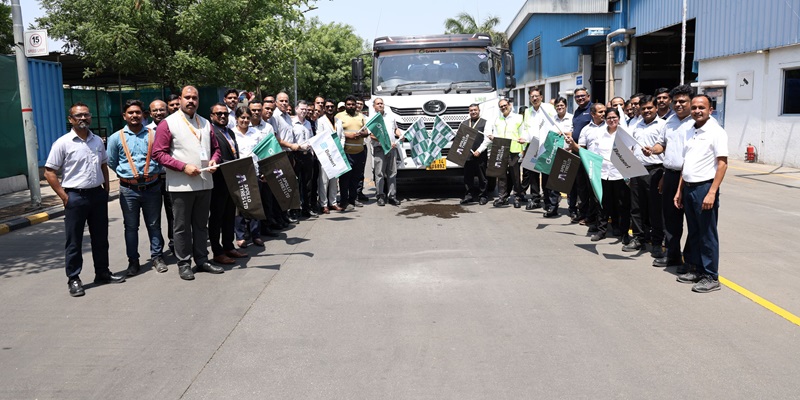Schedule a Call Back
Welding Automation Systems
 Technical Articles
Technical Articles- Jan 07,13
Welding automation systems for the welding of various components and equipment, metal build up, hardfacing and metal spray applications

Welding is one of the most complex manufacturing processes and is frequently the least understood and mostly ignored by the management. The right choice to provide large gains in quality, productivity and profitability in most welding applications is to automate the operation. Welding automation results in increased output, decreased scrap and decreased variable labour costs, like dependency on skilled labour and its availability.
Semi-automatic and fully automatic systems increase output by eliminating the human factor from the welding process. Production weld speeds are set at a percentage of maximum by the machine, not by an operator. With minimal set-up time and higher weld speeds, a mechanised welding system can easily outpace a skilled manual welder Welding applications will benefit most from automation if the quality or function of the weld is critical and if repetitive welds must be made on identical parts .Excellent candidates for automation include batteries, capacitor cans, solenoids, sensors, transducers, metal bellows, relay enclosures, light bulb elements, fuel filters, thermos flasks, medical components, nuclear devices, pipe fittings, transformer cores, valve elements and airbag components.
Industries served using the welding process for hardfacing include fabricators, special equipment manufacturers, automobile part manufacturers, valve manufacturers, oil and gas, tube and pipe mills, pump manufacturers, aerospace industry, metal recycling, cement, power generation, rock crushing, sugar cane shredding, steel mill rolls, dredging and many more Welding automation can be in both semi-automatic and fully automatic form. Welding automation encompasses everything from high production, completely automated transfer lines to machines welding low volume heavy fabrications or pressure vessel weldments where a high degree of loading alignment and set up is required before the part is automatically welded. In semi-automatic welding, an operator manually loads the parts into the welding fixture. Most semi-automatic processes will be done on standard welding automation equipment and not specially designed. A weld controller then keeps the welding power source, motion of the torch, and parts to pre-set parameters. In some cases either the torch or part may remain stationary. After the weld is completed, the operator removes the completed assembly and the process begins again. Semi-automatic welding solutions include components like simple x-y slides - manual and motorised, welding oscillators, welding lathes, turntables, positioners, rotators, and torch manipulators (column and boom), etc.
In fully automatic welding, a specially designed machine, or series of machines, loads the work piece, indexes the part or torch into position, accomplishes the weld, monitors the quality of the joint and unload the finished product. Additional "part in place" and final product quality checks may also be designed into the machine if necessary. Depending on the operation, a machine operator may be necessary. These are complex digital NC or CNC controlled machines using pneumatic and hydraulic systems when required adequately supported by various types and numbers of sensor for sensing the position, motion and control of various parts of system, welding parameters, loading and unloading of the job, etc.
Weld quality consists of two factors: weld integrity and repeatability. Electronic weld process controllers combined with mechanised torch and part motions with electronic recall of welding parameters results in a higher quality weld than can be accomplished manually. This offers instantaneous quality control. Furthermore, because a weld is made only once, defects are readily visible and detectable. In some cases, leak testing and vision systems can be integrated into fully automated systems to provide additional quality control.
Repeatability is a function of the quality of the weld process controller and of the engineering of the machine motions. Mechanised welding provides repeatable input parameters for more repeatable output. Assuming the controller is functioning properly, the question becomes: Can the mechanisms of the machine position the parts or the torch within the specified tolerances for welding? The answer to this question will attest to the quality of system purchased.
Some of the Equipment Required for Welding Automation
Manual and Motorised Slides
Manual and motorised slides are used to hold and provide fine precise movements for adjusting the welding heads in automated welding systems. The slides are available in various capacities from small size (4 kg) having fine step of the screw used in TIG/MIG/plasma welding process to larger sizes of 70 kg load bearing capacity used in the submerged arc process.
They can be fitted to give X-, Y- or Z-axis movements to the welding head depending on the welding process and job requirement. The slides provide precise backlash free movements providing much needed versatility and innovativeness in the welding shop increasing productivity and ensuring repeatable high quality welds in the most difficult jobs.
Cold Wire Feeders
- Precise and controlled addition of filler metal in TIG welding
- Helps weld parameters duplication eliminating welder skill
- Dual groove drive roll system accepts multiple wire sizes
- Eliminates TIG rod stub loss
- Cabinet encloses filler wire spool ensuring cleanliness
- Makes fully automatic TIG welding possible, and
- Results are consistent and high quality welds.
Oscillator

Weld Arc Weaver, commonly known as Welding Oscillator is the mechanism to simulate the condition of weld arc weaving as done by hand by an expert welder.
The motorised mechanism weaves the welding arc through left/right direction as an oscillatory movement over the weld surface ensures controlled spread of arc heat over the weld surface resulting uniform flow of weld pool due to smooth, uniform, stable and precise movement of the welding torch.
Controlled and regulated spread of arc heat and weld globules has a very distinctive advantage of excellent penetration at maximum heat utility efficiency. This also ensures reduction in the heat affected zone, high weld metal deposit efficiency, and highly uniform weld beads. Suitable for processes convenient to automate like TIG, MIG, SAW, FCAW, plasma welding or cladding processes like PTA or powder plasma welding.
The key advantages are: significant improvement in welding or cladding process, increased productivity with ease of operation for multi-pass welding, overall improvement in sidewall fusion and undercut, high weld quality, uniformity and appearance, and higher weld speeds.
Welding Lathe

Welding lathes have been engineered to provide a versatile, rugged and highly productive system for circumferential welding applications with repeatable results.
Typical weld processes include micro TIG, micro plasma, TIG, plasma and MIG. Custom built lathes for both circumferential and linear welding can be provided with addition of mechanisms for movement of the torch.
Welding lathes can be converted to a special purpose machine (SPM) to support simple or complex automation for welding when teamed with the power source, digital or analog controls, cold wire feeder, oscillator, X-Y slides and arc voltage controls. Manual operation can also be done with use of the basic welding lathe. Custom designed lathes and supporting automation can be designed and manufactured as per the job requirement.
Torch Height Controllers
Accurate control of torch to work distance - be it cutting or welding - plays very important role for the quality of the end result of the process.
Torch Height Controller (THC), also known as Arc Voltage Controller (AVC), is a device which maintains the arc gap between the torch and the work piece.
DC, stepper or servo motor driven vertical slide with motor driver and the controller allows the torch to move up or down depending upon variation in the weld profile to maintain the constant arc voltage throughout the welding cycle as per the set value and other parameters.
Arc voltage which acts as a feedback to the controller as reference voltage, allows operator to set the torch to job gap as per the process and the quality requirement. This system is commonly known as Z-axis control. Seam Trackers
Weld seam tracking, as the name suggests, is an automated system which tracks and compensates irregularities in the weld seam and also tracks moving joint profiles during welding process. Types like contact or non-contact type trackers are available. Contact type tracker, depending upon the surface of the weld joint has a sensor in form of wheel, ball, needle which continuously remains in the physical contact of the surface throughout the welding cycle. Generally spring loaded, the sensors' movement is transmitted mechanically or electrically to the seam controlling device to maintain the arc to weld joint variation in controlled limits. The advanced non-contact type tracker involves laser beam which in form of a band is continuously travelled over the seam area. Depending upon the weld joint and the precision required, either single or double beam systems are available. Due to its very nature of non-contact sensing this system can help in more precise tracking with marginally higher speed of welding compared to contact type tracker. However the price factor due to laser has played the important role on applicability of such advance system.
Cameras and Displays
Special cameras and video displays allow remote observation of the welding process showing the seam and the arc. In automated welding the system does not require skilled manual welding as all hadling and movement of the job, welding head and filler wire is done automatically by the system.
This eliminates the need for physical presence of the welder close to the job. The display helps the operators' by removing them from unhealthy and uncomfortable observation's positions and they can be seated at a distance and monitor the welding process.
Welding Positioners
Positioners provide steel fabrication shops a versatile and productive means for placing bulky fabrication jobs in the 'downhand' position. This reduces handling time and frequent use of crane.
The positioners table rotate at accurate and constant variable speeds and tilt through 135? with a high CG load rating and can be conveniently used for circumferential welding, saw and strip cladding, downhand position welding and assembling of intricate assemblies and many more applications.
Welding Turntables
Welding turntables are designed to provide accurate and steady rotation from the smallest to the largest work pieces.
Welding Rotators
Welding rotators are probably the most versatile and useful positioning equipment in a fabrication shop.
They are mainly used to rotate or position the cylindrical jobs for circumferential welding (TIG/MIG/Sub Arc). The machine consists of a drive unit and idler unit which can be one or more and control panel with pendant. AC geared motors with variable frequency drive is used for stepless speed variation. The rollers are made of steel or moulded with polyurethane as per the job requirement.
Conventional Rotators
These comprise basically two sets of rollers which are adjustable either manually across the frames or through lead-screw and ratchet, when changing from one diameter to another. Self-aligning Rotators
The rollers of these machines can be adjusted when loading to suit the diameter of vessel. Adjustment can be manual or motorised by sliding the roller brackets over the base frame equally in both directions through a lead screw having LH and RH threads. Thus a large range of diameters can be accommodated without need for any adjustment whatsoever.
Welding Column and Boom
Welding column and boom is also called as a welding head manipulator. The welding head and oscillator is mounted at one end of the boom. The wire reel can be mounted at the front or at the rear end of the boom. The column and boom along with the welding rotators enable automatic circumferential and long seam welding.
(James Rodrigues, Director, Arcraft Plasma Equipments (I) Pvt Ltd, Mumbai. Tel: 022-28963247, 28965890, 28965745. Fax: 91-22-28966418. Mobile: 098206-84001. Email: arcraftplasma@gmail.com)
Related Products

Hi-power Milling Chucks
Bilz Tool
offers a wide range of hi-power milling chucks.

Spur Gears
Shubham Gears is engaged in offering a comprehensive variety of spur gears.

Commutator Motors
J D Automation provides a range of commutator motors, which are also
known as permanent magnet DC motors.













